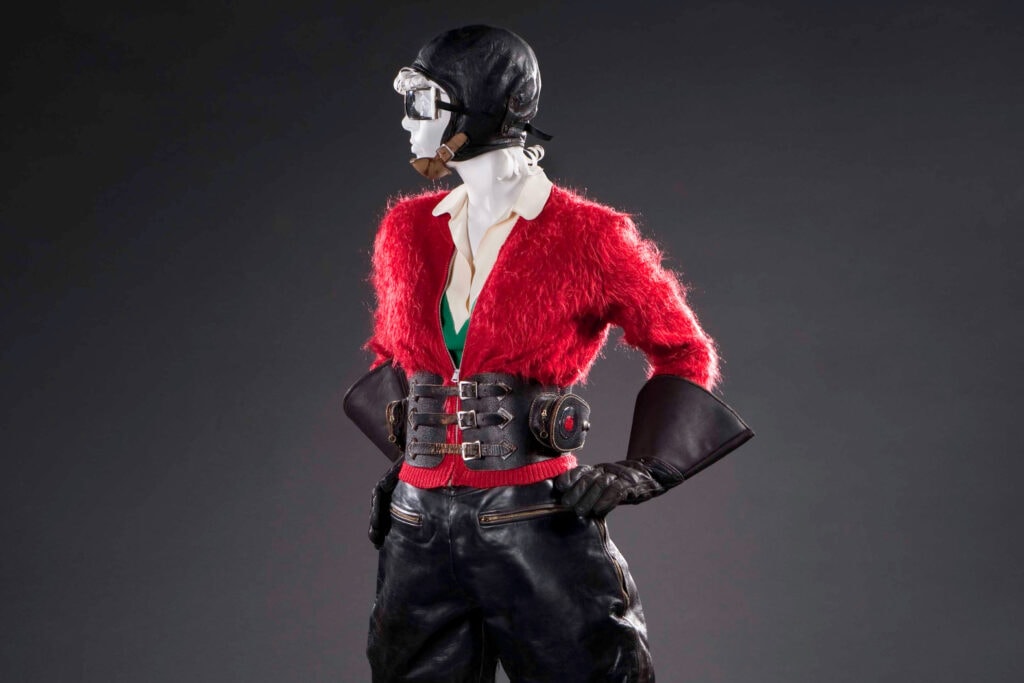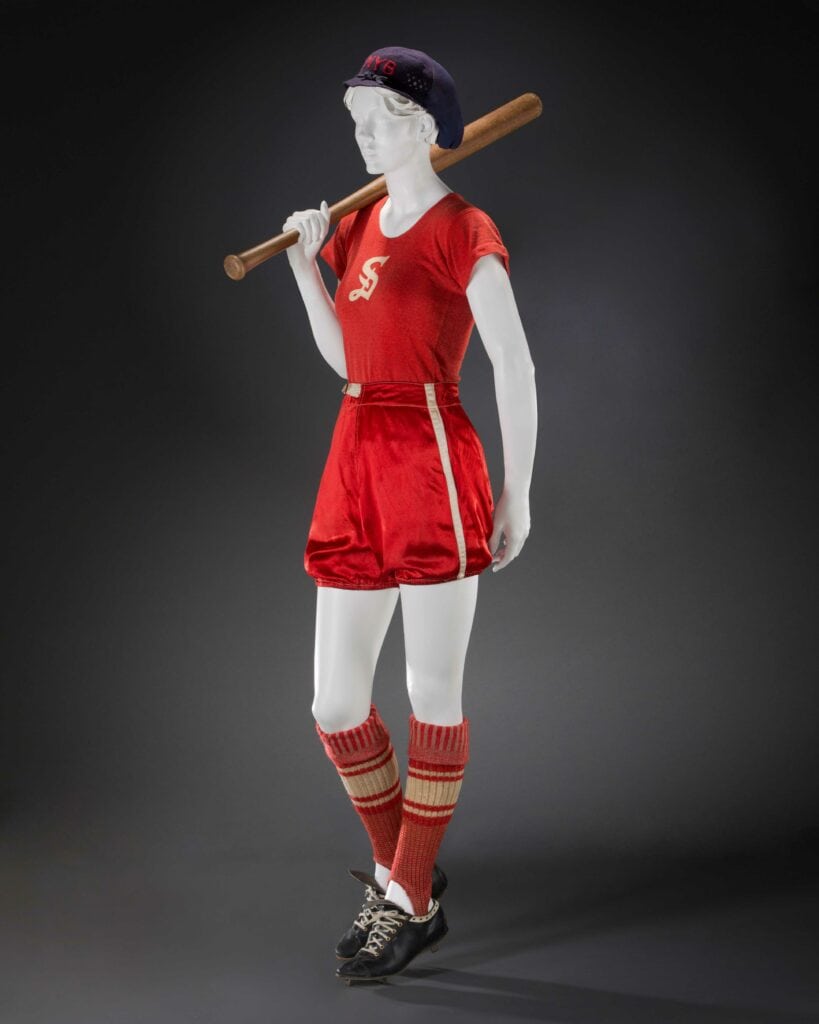Visiting the Taft Museum of Art for an exhibit always feels like an occasion for fashion and art to come to life. And visiting this season for the Sporting Fashion: Outdoor Girls 1800 to 1960 show lived up to that tradition beautifully.
Curators at the Taft joined forces with experts from the American Federation of Arts and the FIDM Museum at the Fashion Institute of Design & Merchandising to display an intriguing collection of looks for women as they started competing in sporting activities. From the Taft, “As both athletes and spectators, women – and the innovative and stylish attire they wore – helped break down the barriers that had isolated them from the then male-dominated sporting world.”

With the exhibit beginning in the main open space on the second floor, visitors are first met with a red jacket-topped 1930s motorcycling outfit – accessorized with protective belt, helmet and boots – that tells the stories of Clara Wagner and Bessie Stringfield and how their ingenuity welcomed women into the motorcycling world. As visually striking as the outfit is, it also served to set the stage for what to expect in the rest of the exhibit: a weaving of the stories of real-life women with the clothing they embodied. {A note on accessories: every look in this collection was very well accessorized with the historically accurate sporting equipment to match the ensemble, serving to enhance the overall visual.}
Visitors are then welcomed into the wide-open space to view areas ranging from “Stepping Outdoors” to “A Team Effort” with many stops in between. There’s a lot to take in. Personal highlights being the “Rain Walking, 1950s” look that showed the ushering in of synthetic fabrics, the “Beach Promenading, 1920s” look that spotlighted the French lounging aesthetic that would define the decade, the “Hunting, 1840s” look that was one of the earlier examples of how menswear was adapted for a women’s costume and the “Baseball, 1930s” look that came with shorts – daring for the time period as compared to the skirts most women wore (this look in particular was reminiscent of conversations around uniforms in the 1992 classic “A League of Their Own”). As visitors walked through the second set of doors, they saw the “Wheels and Wings” area that focused on women’s styles on the road and in the sky – closing the loop nicely in relation to the opening motoring look.

The exhibit is so full of interesting pieces, but here’s where it’s important to touch upon an issue that the Taft space does have (as seen several times in years past). This main space on the second floor allows for clothing to really flourish in the open light, but because there’s an island in the middle of the space (creating a horseshoe line), it can be difficult for a visitor to decipher the intended flow of the room. Should you keep to the outside edge and circle back to the island? Should you go from left to right? It’s assumed that the curators have an intended way they wish visitors to view the show to maximize its storytelling.
And, speaking of storytelling, one additional challenge this particular exhibit had was that the styles on display were, for the most part, not placed in chronological order – instead organized by sporting theme. Focusing on the theme makes sense given the fashions at hand and did offer a wonderful opportunity to tell mini-narratives throughout the exhibit. But, for those who like to see a story in order, it is quite jarring to hop throughout the decades within one visual line. It’s possible that a part of the macro narrative was actually missed by not seeing the advancement of women’s sporting fashion in order of time. Good news is that some looks were grouped by year, specifically the tennis, cheerleading and riding ones, which allowed for visitors to see the progression more clearly.
The Taft usually continues the exhibit in the sitting area outside and into the family home. As a compliment for this exhibit, the sitting area was an interactive display of fabric innovation in chronological order through the decades. In addition to helping the visual narrative, it was also a neat occasion to touch fabrics and envision what wearing the pieces on display must have been like.
Taking full advantage of the main part of the Taft home, further areas showcased swimwear and bathing costumes, ensembles for cycling, boating and more obscure sports like fencing and cricket. In terms of high fashion, a standout was the “Promenading 1930s” look which featured designs by Gabrielle “Coco” Chanel and Cristóbal Balenciaga. This was the first mention of Chanel in the exhibit, which is interesting given that her innovations in jersey led the way for modern sportswear styles and materials and changed how women approached everyday fashion.
One additional item to note is that the idea of costume was a subtle concept used throughout. Even though each look had a practical purpose to them in theory, there was an aspect that women had to dress the part to participate in the activity and elegance needed to be at the forefront. Early riding ensembles had long skirts with weights added to them to maintain draping. 1950s swimwear was enhanced with materials such as lace and satin. Many more examples abound, but as the years progressed and women started to engage in sports like tennis, golfing and fencing, outfits were adapted to be more substantive than concerned with style.
Throughout the exhibit, the focus on real women’s stories (more so than just textile explanations) was a welcome opportunity to learn more and was paired nicely with magazine covers and other publications from those time periods. Despite any challenges, the exhibit wonderfully shows the evolution of sporting fashion from 1800 to 1960 and how it enhanced the growth of women’s liberation during this era and beyond. It’s fascinating to look back and see that sporting for women started with the most basic of tasks: summer walking. To think there was a time when the movements of women of a certain class were so restricted that they couldn’t simply take a walk without it being an occasion is astounding, especially in the context that men of the same era could navigate the world as they wished.
Instead of attempting to re-write the narrative, this exhibit honors and celebrates the long road women have embarked upon while making one interested in how innovations in sporting may continue to shape women’s lives in the future.